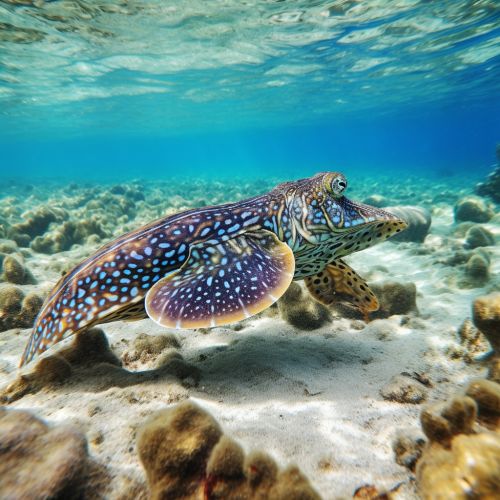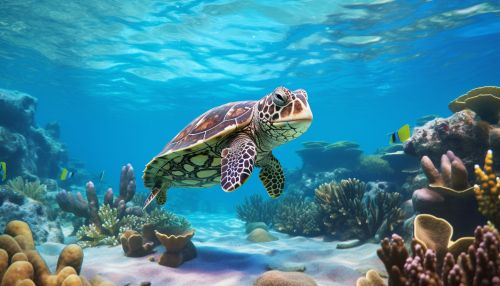The Evolution of Camouflage in Marine Animals
Introduction
The evolutionary development of camouflage in marine animals is a fascinating and complex subject. This process, driven by the pressures of predation and the need to secure prey, has resulted in a myriad of adaptive strategies. These strategies range from coloration and patterning to body shape and behavior, all of which serve to conceal these creatures from both predators and prey alike.


Evolutionary Background
The concept of camouflage in marine animals is deeply rooted in the principles of natural selection. Over millions of years, individuals within species that were better able to blend in with their environment had a higher chance of survival and reproduction. This advantage was then passed on to subsequent generations, leading to the prevalence of camouflage traits in many marine species today.
Types of Camouflage
There are several types of camouflage that have evolved in marine animals, each with its own unique mechanisms and evolutionary advantages.
Coloration
Coloration is perhaps the most common form of camouflage in marine animals. This involves the animal changing its color to match that of its surroundings, making it difficult for predators or prey to distinguish it from the environment. This is often achieved through the use of specialized cells known as chromatophores, which can change color in response to various stimuli.
Countershading
Countershading is a form of coloration where the animal's upper surface is darker than its lower surface. This helps to conceal the animal from predators above and below by reducing the contrast between the animal and the light coming from the surface of the water.
Disruptive Coloration
Disruptive coloration involves the use of high-contrast patterns to break up the outline of the animal's body, making it difficult for predators to recognize the animal's shape. This is often seen in species such as the cuttlefish and the octopus, which can change their skin patterns in an instant to match their surroundings.
Mimicry
Mimicry involves the animal taking on the appearance of another species or object in its environment. This can serve to either deter predators, by mimicking a dangerous or unpalatable species, or to deceive prey, by mimicking a harmless or attractive object.
Transparency and Reflectivity
Some marine animals, particularly those that live in the open ocean, have evolved to be transparent or highly reflective. This makes them virtually invisible in the water, as they do not cast a shadow or reflect light in a way that would reveal their presence.
Adaptive Mechanisms
Marine animals have developed a number of adaptive mechanisms to support their camouflage abilities. These include physiological changes, such as the development of chromatophores, and behavioral adaptations, such as choosing habitats that match their coloration.
Chromatophores
Chromatophores are specialized cells that can change color in response to various stimuli. They contain pigments that can be moved around the cell to alter the color that is visible from the outside. This allows animals such as the cuttlefish and the octopus to change their color and pattern in an instant to match their surroundings.
Habitat Selection
Many marine animals choose habitats that match their coloration. This not only helps to conceal them from predators and prey, but also reduces the energy they need to spend on changing their coloration.
Behavioral Adaptations
In addition to physiological adaptations, many marine animals have developed behavioral adaptations to enhance their camouflage abilities. These can include remaining still to avoid detection, moving slowly or in a way that mimics the movement of their surroundings, and choosing times of day or light conditions that best match their coloration.
Impact on Survival and Reproduction
Camouflage plays a crucial role in the survival and reproduction of many marine species. By concealing themselves from predators, these animals are able to increase their lifespan and reproductive success. Furthermore, by deceiving their prey, they are able to secure more food resources, which can also contribute to their reproductive success.
Future Research Directions
Despite the wealth of knowledge that has been gained about the evolution of camouflage in marine animals, there is still much to learn. Future research directions may include exploring the genetic basis of camouflage traits, investigating the impact of climate change on camouflage strategies, and developing new technologies to study camouflage in the wild.
